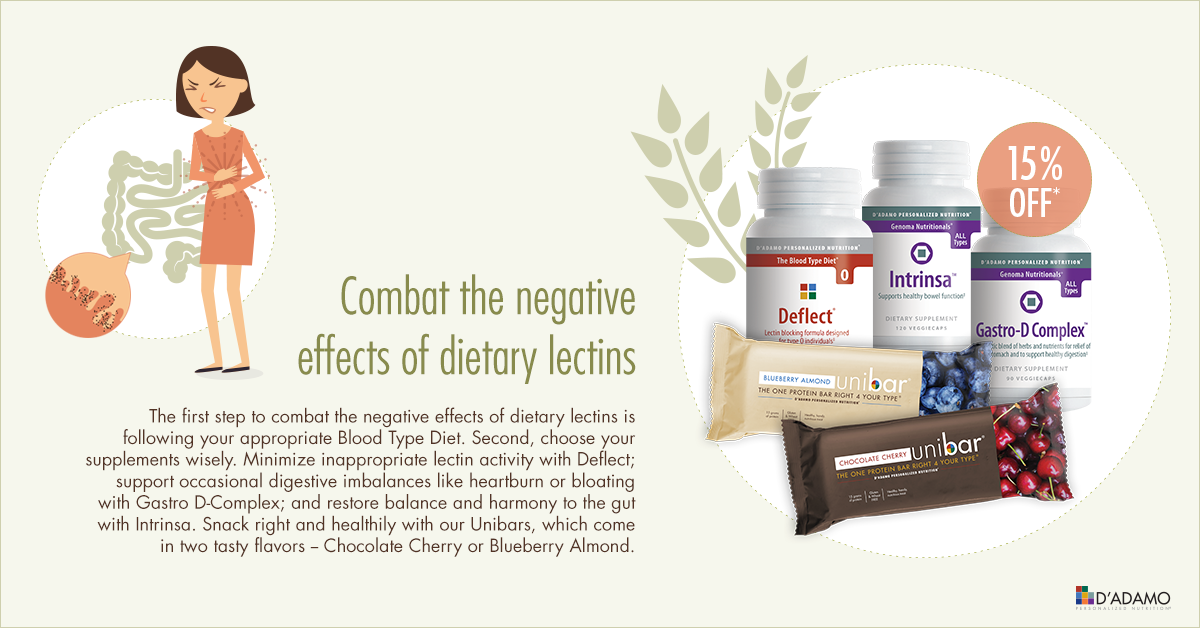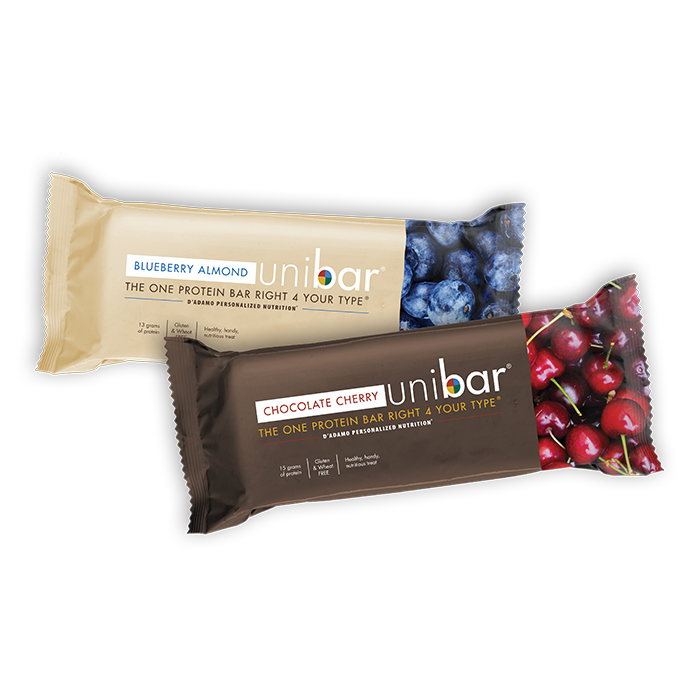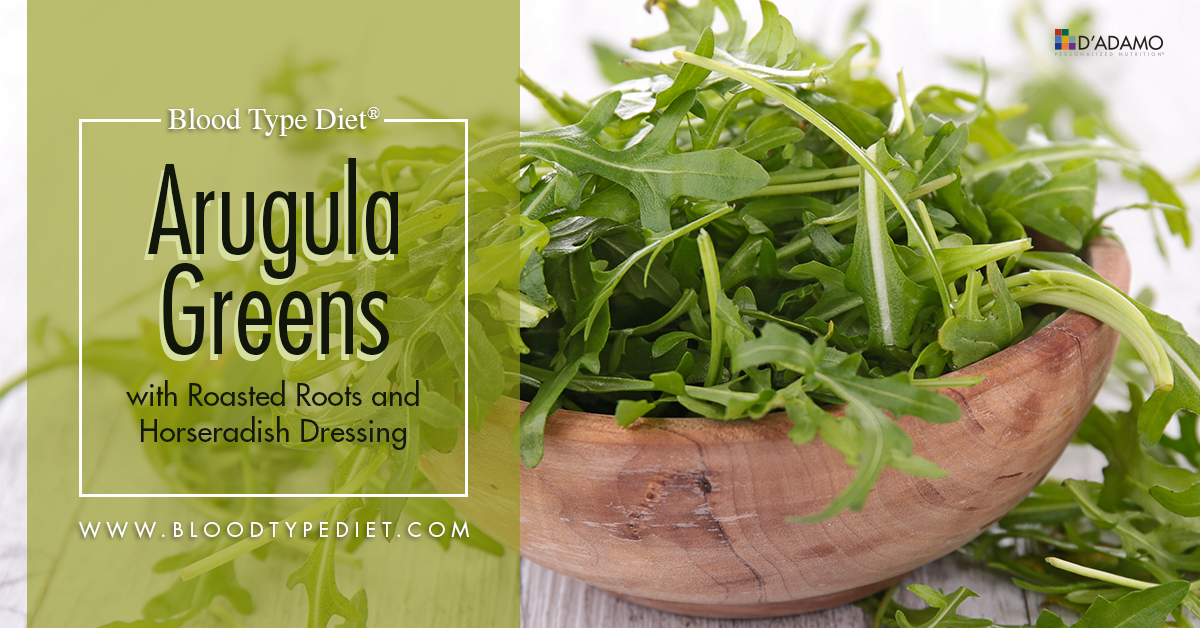Volume 12, Number 09
- Lectins and Blood Types by Dr. Peter J. D'Adamo
- Don't Be So Stuck Up by Martha D'Adamo
- September Product Specials: 15% OFF Deflect, Gastro-D Complex, Intrinsa, and Unibars
- Recipes: Arugula Greens with Roasted Roots and Horseradish Dressing
Lectins and Blood TypesBy Dr. Peter J. D'Adamo |
|
|
All living things manufacture sugars on their surfaces, and sometimes these sugars are also secreted in free form as a type of protective coating. Good examples of these free sugars are the algae slimes found on top of stagnant water and our own mucus secretions. Among the tens of thousands of different complex sugars produced by the cell for use in signaling and recognition is one that determines ABO blood group.
Living things manufacture agglutinins in a great variety of shapes and forms, and they don't share any real characteristics other than the ability to clump sugars together. Lectins are similar to a selective Velcro, a powerful way for organisms in nature to attach themselves to other organisms in nature. This natural Velcro comes in two varieties, one-sided and two-sided. The one-sided variety just gets stuck on things. Lots of germs, and even our own immune systems, use the one-sided variety all the time. Cells in the bile ducts of the liver have lectins on their surfaces to help them snatch up bacteria and parasites. Bacteria and other microbes have lectins on their surfaces that work rather like suction cups so that they can attach to the slippery mucus linings of the body. Sometimes the lectins that viruses or bacteria use can be blood group specific, making the microbe a stickier pest for a person of the favored blood group.
The degree that lectins stick to cells is mostly determined by the amount of glycoconjugates (or degree of glycosylation) that a particular tissue has. The cells lining the small intestine wall, for example, are typically very glycosylated, and thus less able to bind lectins. Yet it is not just the amount of glycoconjugates that determines the reactivity of dietary lectins. Remember that lectins are very choosy about what they deign to attach to, and their criteria are highly individualized.
Lectins are always specific to the species from which they are derived. For example, the lectin found in wheat is different from the lectin found in soy, it has a different shape and it attaches to a different combination of sugars. Lectins are most widely distributed in plants. Particularly abundant in legumes, they account for between 2% and 3% of the total protein content of soybeans, lentils, and peanuts. The second most common source of lectins is seafood, particularly eel, shellfish, snails, halibut, and flounder. Because they are commonly found in grains, seafood, legumes, and vegetables, lectins are widely abundant in the typical diet. Even tiny amounts of a lectin will suffice to clump huge numbers of cells.
Many lectin-containing foods evade cooking because they are normally eaten raw, such as tomatoes, now the primary vegetable source of vitamins and minerals in the U.S. diet. Unlike most lectins, which usually react with only one blood group or another, tomato lectin is a panagglutinin; it is able to attach itself with equal ease to the cells of all blood groups. The average American consumes around 200 milligrams of lectins per year from tomatoes alone, and many other salad ingredients are rich in lectins. Studies show that up to 5% of the ingested dietary lectins are absorbed into the bloodstream. There they can clump and bind to red and white blood cells, destroying them. It has been proposed that much of the low-grade anemia seen in Third World countries may be caused by the destruction of red blood cells from lectin-rich grain and bean diets. However, the actions of food lectins on the digestive tract are probably much more potent. Here they can cause inflammation of the mucus linings, and mimic many of the symptoms of food allergies. Lectins and Blood Groups As mentioned earlier, lectins can be blood group specific-that is, able to agglutinate the cells of one ABO type but not those of another. Lima bean lectin agglutinates cells of human group A but not those O or B. The seeds of Lotus tetragonolobus (asparagus-pea) can agglutinate group O specifically, and Bandeiraea simplicifolia can agglutinate group B. The specificity of lectins is so sharply defined that they can even differentiate among blood subgroups. In fact, until Dolichos biflorens (mangosteen) lectin was shown to react more vigorously with some A cells than others, we did not know that there were two varieties of A: A1 and A2. Other blood groups can be distinguished by lectins, such as M and N types, and lectins can help distinguish secretor status. The following chart highlights the foods that contain lectins specific to each blood type, which should be avoided.
Lectins have an effect on bodily systems such as your digestion, joint health, immune system and metabolism. Following an individualized diet such as the Blood Type Diet, the GenoType Diet, or a personalized SWAMI Diet provides optimal lectin-blocking nutrition and offers protection against the negative effects of dietary lectins.
|
Don't Be So Stuck UpBy Martha D'Adamo |
|
 |
I think this phrase really dates me. It was a big one for me growing up in the late sixties and early seventies. Other kids were defined as "cool," "friendly," or "stuck up." Stuck up in this context meant that the kid was either too full of them self or didn't mix with other kids who were not stuck up. And the stuck up ones clumped together. I wasn't in the stuck up group, nor was I in the cool group. I just was. I hadn't thought about being stuck up since late grade school/high school, and when I was thinking about lectins, the phrase popped into my mind. It gave me a good mental picture of the actions of lectins, clumping (agglutinating) together, and being separate from the rest of the cells. This also gave me a laugh, as I envisioned the playground at break resembling groups of clumping kids in parochial school uniforms—the corn group, the potato group, the wheat group! A silly exercise and quite simplistic, but it reinforced the damage done by dietary lectins. I am an O, and I know my list of foods to avoid because of their lectin content. Wheat, corn, white potatoes – the food I grew up on! – are avoids for me. I have found spelt an acceptable substitute for wheat, but when I am not feeling well, I even avoid spelt as well as most other grains. I don't have a problem with corn except in July, when that beautiful, sweet Jersey corn is harvested, and I watch other people eat it. I have so many memories of going to the local farmers in New Jersey when I was growing up and getting corn that was just picked. Once in a while, we'd even pick it ourselves. Crisp and sweet, it was a childhood symbol of summer. There are no substitutes for corn for me, and I'll keep my memories. And white potatoes. With an Irish mother, you can only imagine how many times a week we had potatoes. Mashed, boiled, baked, potato salad, roasted, as a side and sometimes as a main meal, potatoes were comfort food. I've switched to sweet potatoes, which are wonderfully tasty, but they do not have the embedded memories of early life. I've chosen to make new memories for myself, and I've enjoyed experimenting with recipes. It all comes down to this: I choose health over my memories and those moments of craving a comfort from long ago that actually doesn't provide comfort in the current day. I choose my comfort and my nourishment from foods that support me and sustain me, that act as Hippocrates' said as "food as medicine." What's interesting is that the word lectin in Latin means "I choose." Just as on the playground as a young girl, I choose not to be stuck up. |
Arugula Greens with Roasted Roots and Horseradish Dressing |
|
|
|
|
|
With the abundance of late summer arugula; we wanted to feature a recipe that takes advantage of this wonderful green, which is neutral for all blood types (secretor and non-secretors). Arugula, also known as rocket, roquette, rugula, and rucola, is a bitter, aromatic salad green with a peppery mustard flavor. We've substituted it for dandelion greens in this delicious salad that celebrates the end of summer as it welcomes the fall. Ingredients:
Dressing:
Directions:
Serves 4 |
|
|
This recipe was adapted from the Eat Right for Your Type Personalized Cookbooks series, |
|

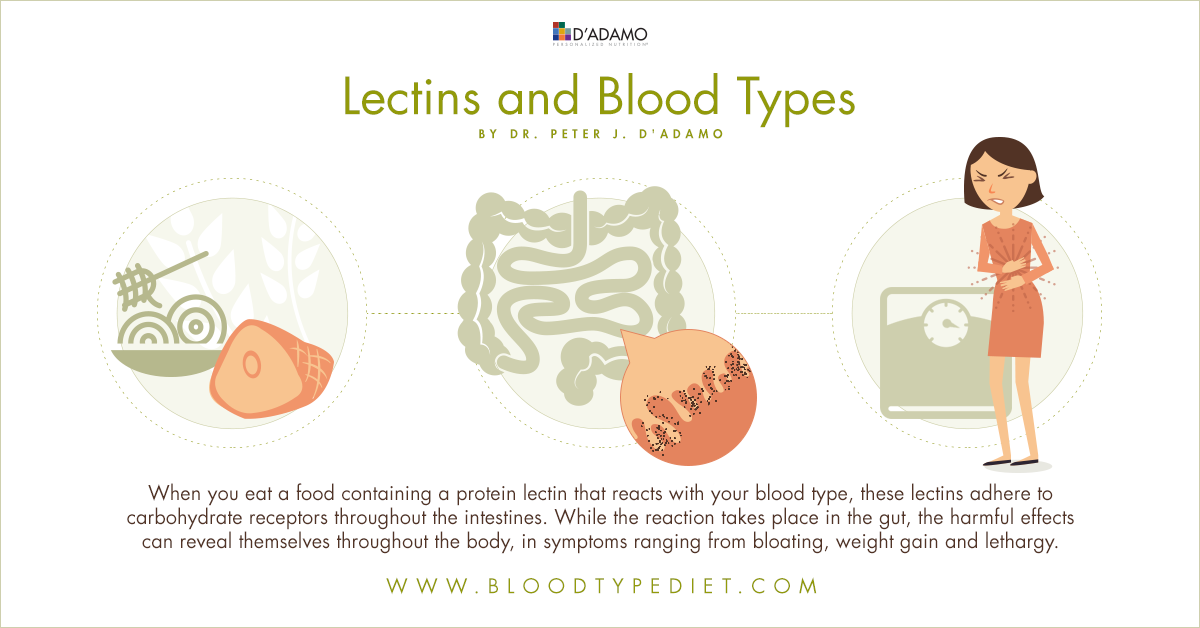
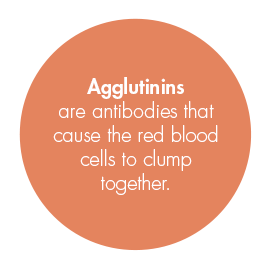 Like the other surface sugars, blood group antigens telescope out from the cell wall, and are found principally in the blood stream and digestive tract. While they are attached to the cell wall, they are not fixed in place. Rather, they move around the cell's surface. Sticking out the way they do, in a world of things reacting with one blood group or another, it would seem inevitable that they would get tangled up with things. Most of the time these are agglutination-type reactions.
Like the other surface sugars, blood group antigens telescope out from the cell wall, and are found principally in the blood stream and digestive tract. While they are attached to the cell wall, they are not fixed in place. Rather, they move around the cell's surface. Sticking out the way they do, in a world of things reacting with one blood group or another, it would seem inevitable that they would get tangled up with things. Most of the time these are agglutination-type reactions. Two-sided lectins stick other cells together, like two tennis balls stuck together by a piece of two-sided Velcro. Think of the fuzz on the tennis ball as the assortment of sugars (including one that determines blood group) that line the surface of the cell.
Two-sided lectins stick other cells together, like two tennis balls stuck together by a piece of two-sided Velcro. Think of the fuzz on the tennis ball as the assortment of sugars (including one that determines blood group) that line the surface of the cell.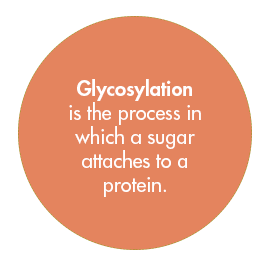 Factors influencing glycosylation in the intestines, and hence the activity of dietary lectins, include age, health and blood type, among others.
Factors influencing glycosylation in the intestines, and hence the activity of dietary lectins, include age, health and blood type, among others.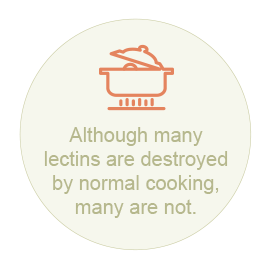 Although many lectins are destroyed by normal cooking, many are not. The lectin found in wheat germ will resist heating 100°C (212°F) for 30 minutes. Other food lectins known to resist destruction by cooking include apples, carrots, wheat brans, canned corns, pumpkin seeds, bananas, and wheat flour. The clumping abilities of bananas agglutinin are actually enhanced by heating. Researchers have also noted high levels of lectin activity in dry roasted peanuts, and certain processed breakfast cereals. Lectins from kidney beans can resist mild cooking and retain their activity, even at 90°C (194°F) for 3 hours. Presoaking the beans, however, results in complete loss of lectin activity.
Although many lectins are destroyed by normal cooking, many are not. The lectin found in wheat germ will resist heating 100°C (212°F) for 30 minutes. Other food lectins known to resist destruction by cooking include apples, carrots, wheat brans, canned corns, pumpkin seeds, bananas, and wheat flour. The clumping abilities of bananas agglutinin are actually enhanced by heating. Researchers have also noted high levels of lectin activity in dry roasted peanuts, and certain processed breakfast cereals. Lectins from kidney beans can resist mild cooking and retain their activity, even at 90°C (194°F) for 3 hours. Presoaking the beans, however, results in complete loss of lectin activity.
